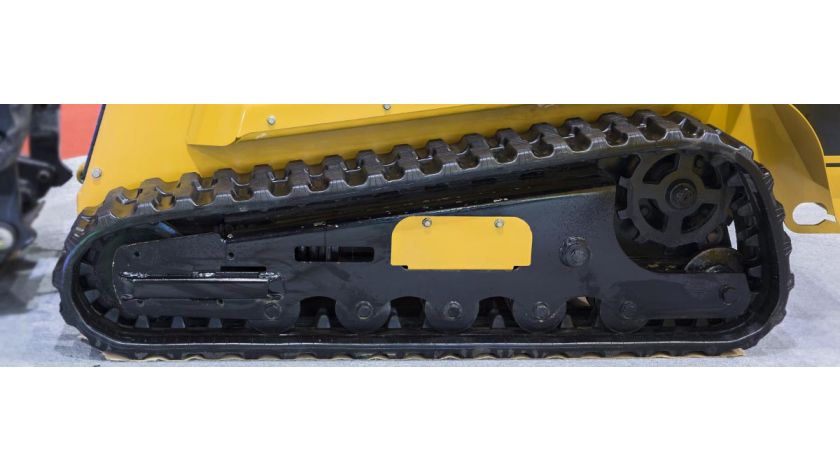
Compact construction equipment can be used for a myriad of tasks; making them a valuable addition to any worksite. With their lighter weight, they put less pressure on the ground, causing less damage to the landscaping. To get the most out of your equipment and make your project as efficient as possible, it’s important that you select a tread pattern to match your project. Not only will this reduce damage to the ground, but it will also extend the life of your tracks. Here are some common tread patterns and the best times to use them.
Turf
The turf pattern is the least aggressive pattern you can find. It exerts the least amount of ground pressure on the landscaping and is best used when minimizing ground disturbance is a top priority. The low lug height means that the tracks have reduced traction and minimal ground material displacement. You will find these tracks on machines used at golf courses, parks and by pool builders.
C-Pattern
The C-Pattern tread is a standard design offered by many OEMs. It offers a smoother ride for the operator and the multiple biting edges provide for excellent traction in muddy conditions or soft dirt. This pattern is highly durable and offers superior handling and improved performance. You’ll find this pattern in use at a variety of worksites.
Block Pattern
The block pattern is another pattern that may come standard from the OEM. The block tread is a versatile, multi-purpose track with large lugs that provide good traction. It’s often used for abrasive surfaces like gravel or pavement but is also suitable for sand, clay, dirt and mud. This pattern is durable and long-lasting.
Zig-Zag
Great for use in muddy or snowy situations, the zig-zag pattern offers enhanced traction and helps eliminate slippage. This pattern can also help stabilize the machine on slippery, muddy slopes. Avoid using it in dry, rocky conditions, as doing so will wear your treads prematurely.
Steel Tracks
Steel tracks are great in extremely adverse conditions such as logging, demolition and waste management. The rigid steel provides better traction in muddy conditions or on extremely uneven surfaces and is resistant to chemicals and sharp edges unlike rubber tracks. Steel tracks shouldn’t be used on sensitive surfaces because they are heavier and harsher. They are also much louder than rubber tracks and offer less comfort to the operator.
These are just a sampling of tread patterns available for light construction equipment. By making sure to match your tracks to the job, you can get the most bang for your buck. When selecting a tread pattern, keep in mind the types of projects you will be using your equipment on. Matching your pattern to your work demands will help prolong the life of your tracks, which in turn lowers your operating costs and increases productivity. With more than 600,000 light construction part numbers including rubber tracks, turn to TVH for your light construction replacement parts and accessories needs!